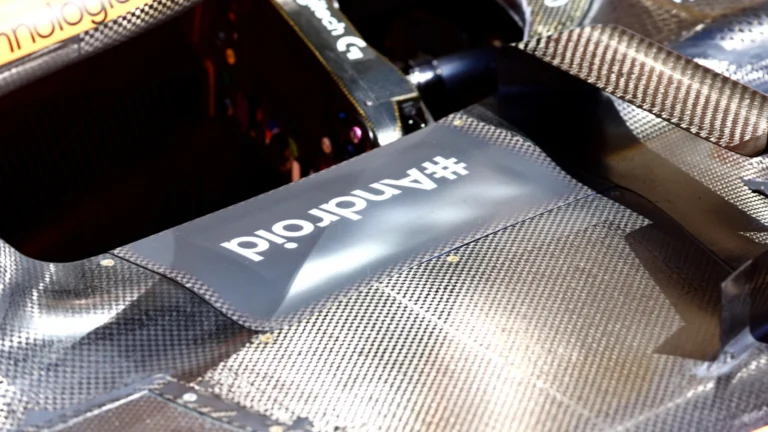
In a groundbreaking move, McLaren Racing introduced digital advertising panels on their Formula 1 cars during the 2022 season, aiming to revolutionize on-car branding by allowing dynamic changes to sponsor logos throughout a race weekend. This innovation, developed in collaboration with Seamless Digital, was first tested during free practice sessions at the United States Grand Prix in Austin, Texas.
The technology featured two lightweight displays, each weighing approximately 190 grams, strategically positioned around the cockpit area to maximize visibility without compromising the car’s aerodynamic integrity. These panels enabled McLaren to rotate different sponsor logos in real-time, offering enhanced flexibility and value to their partners.
Despite the initial excitement and successful implementation, McLaren has recently decided to discontinue the use of these digital advertising panels on their Formula 1 cars. While the team has not publicly disclosed specific reasons for this decision, several factors may have influenced it.
Technical and Operational Challenges: Integrating new technology into high-performance racing machines is inherently complex. Ensuring that the digital panels function flawlessly under extreme conditions—such as high speeds, varying temperatures, and intense vibrations—requires rigorous testing and validation. Any technical glitches could potentially impact the car’s performance or distract the driver, leading teams to exercise caution.
Cost-Benefit Considerations: While dynamic advertising offers increased flexibility, the financial benefits must outweigh the costs associated with research, development, integration, and potential maintenance of the technology. If the return on investment did not meet expectations, McLaren might have chosen to allocate resources elsewhere.
Regulatory and Safety Concerns: Formula 1 is governed by stringent regulations to ensure safety and fair competition. The introduction of new technologies, especially those related to the car’s exterior, may raise concerns among regulatory bodies or other teams regarding compliance, safety, or potential competitive advantages







